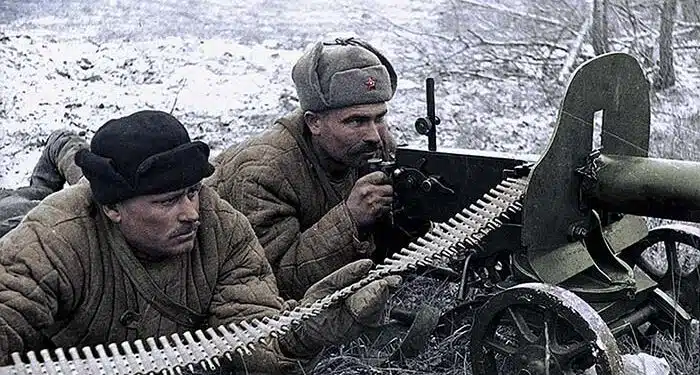By Terry Edwards
“You only have to kick in the door and the whole rotten structure will come crashing down…”
-Adolph Hitler
With this prediction, Hitler launched Operation Barbarossa, his invasion of the Soviet Union, on Sunday morning, June 22, 1941.
In four months, his army carved hundreds of miles east from Poland, through Russia, to the city of Tula. Tula straddled the roads and rails 120-miles south of Moscow and blocked the advancing Panzers’ path to victory. On October 29, 1941, Tula was now the door to Moscow.
Late in the 1500s, Tsar Fyodor I first settled gun-makers in Tula near the iron ore deposits by the Upa River. In the years that followed, Tula courted foreign gunsmiths and engineers to the city, and it became the center of Russian iron working and armaments. Peter the Great visited in 1712 and founded the state armory. By 1720, more than 1000 workers were producing 20,000 muskets a year. Tula gained a reputation for high-quality arms, often with ornate decoration, but the meat and potatoes continued to be military guns, like the Berdan rifles produced beginning in 1879. It was a city built by iron.
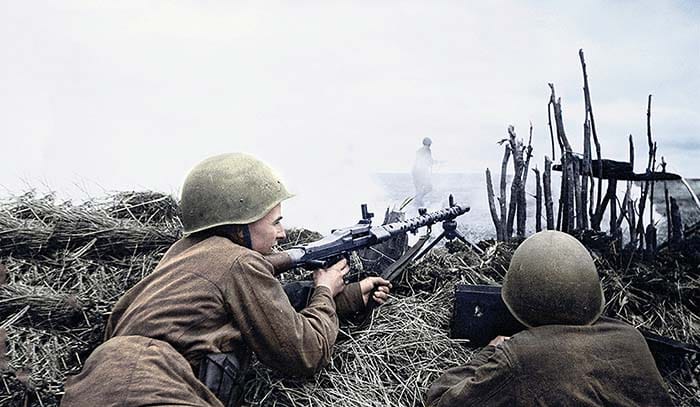
Arms production for the Russo-Japanese War of 1904–1905 and WWI swelled Tula still more. Most of the guns used in the Red Revolution and the fighting to follow came from Tula. When Hitler attacked, the City of Tula had a population of 272,000.
Hitler had confidently declared Russia would be defeated in three months. He was sure the Red Army would crumble if they lost the western industrial and agricultural heartland. An eastward retreat would be a suicide march into the wilderness. Hitler’s blazing victory would be so swift that no winter clothes for the troops, anti-freeze or low-temperature oils for engines and guns need be considered.
To Hitler the invasion of Russia was inevitable. It was Germany’s destiny and his to lead it. Communism was the mortal enemy of National Socialism and, moreover, the lands to the east were vital to a German future. There was no other choice.
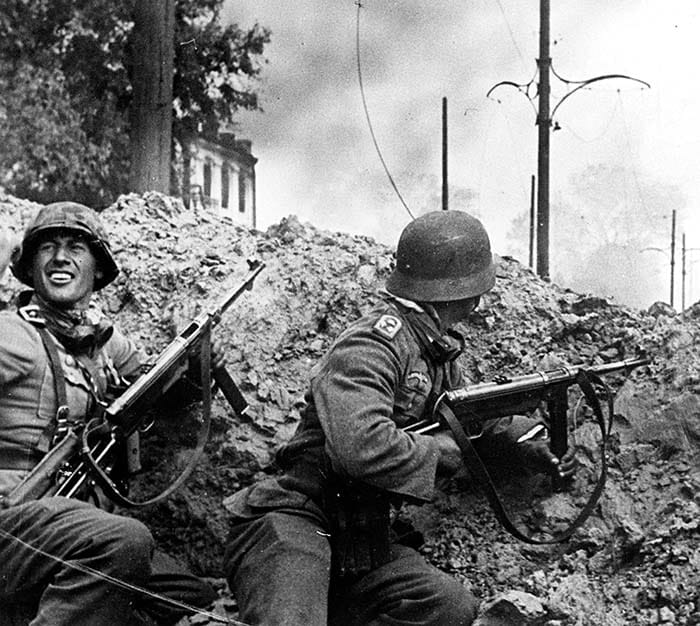
There were strong voices against it at the time. Despite the German victories in Europe, England remained stubbornly unbowed, and opening a new front seemed foolhardy. Many of Hitler’s economic advisors warned the acquisition and administration of so much territory would be more a drain than an asset. And, this assumed they won!
But, the pessimists were lesser men; men without vision … Hitler knew better. Hitler knew the Reds were soft. The brief Winter War of 1939–1940 in which the Soviets failed to subdue Finland convinced him. The German high command, flushed with victory and bedecked with new medals, were aware that Stalin’s purges of Soviet officers had wiped away the Red Army leadership. They agreed. All were arrogantly unaware of the lessons Stalin had learned. In the wake of the Finnish disaster, he was already recalling thousands of fired officers and over-hauling Soviet equipment.
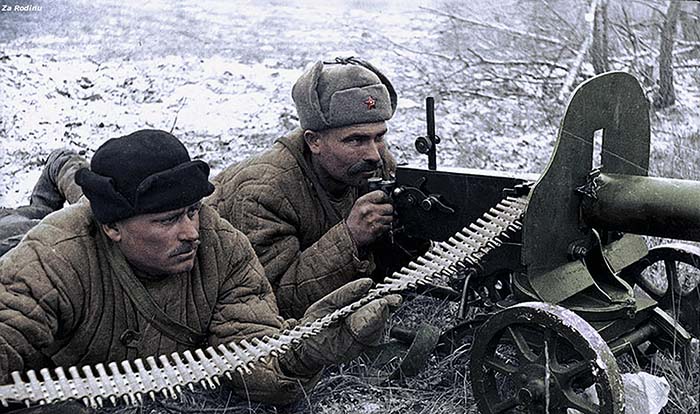
In the snowy forests, the Finnish Suomi KP/-31 submachine gun had taken a heavy toll on the Reds. True, the Soviets had their old-style PPD designed by Vasily Degtyaryov. It was serviceable, but there were never enough. Russia would need millions of guns.
Georgy Shpagin redesigned his friend’s PPD to produce the PPSh-41. The initials stand for “Pistolet-Pulemyot Shpagina,” or, in English, “Pistol, Machine, Shpagin.” The 41 is for the year of adoption—1941. Like the PPD, the PPSh is blow-back operated and fires the Russian 7.62mm pistol round. This was modeled after the German 7.63mm cartridge and could fire the German cartridge as well. The reverse was not true as the more powerful Russian round could damage the German guns. The PPSh wasn’t in production when the Germans stormed the Russian border, but by the time they reached Tula, the gun was being stamped out in Moscow. The PPSh incorporated a copy of the Suomi 71-round ammunition drum. Eventually over six million were made. With its 900rpm fire rate it was hugely popular and easily maintained by even ill-trained soldiers. Even German soldiers were happy to be issued captured PPShs, converted to 9mm.
Degtyaryov and Shpagin worked together as friends and protégés of Vladimir Federov for many years. The clique of Soviet arms designers were all favorites of Stalin, surviving the purges and enjoying many honors. The Degtyaryov plant at Kovrov was named in honor of Degtyaryov.
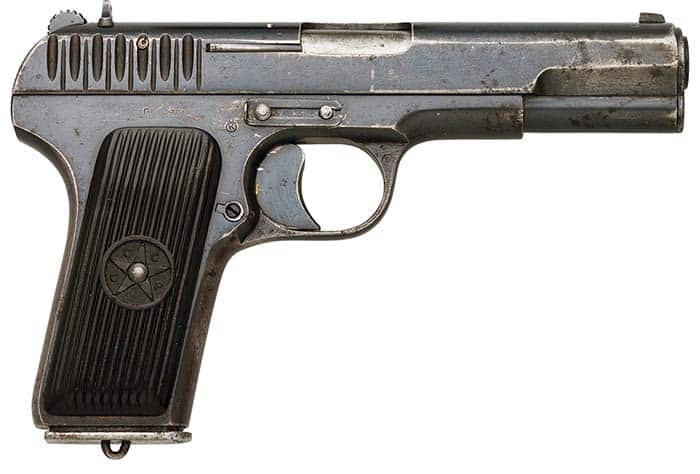
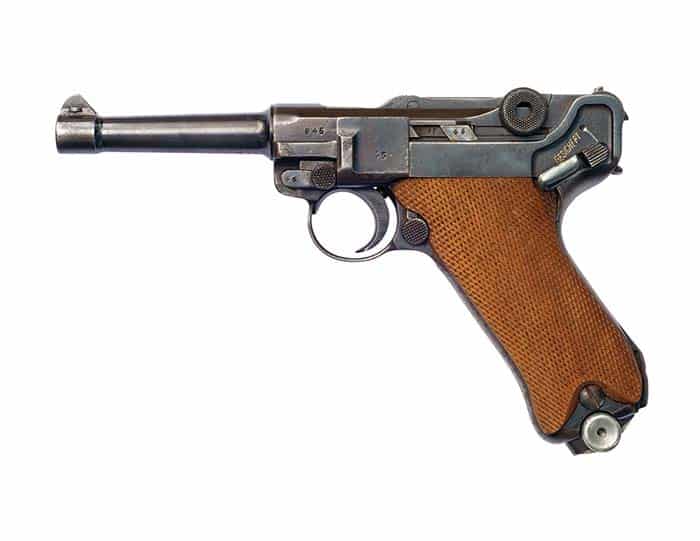
One of the most successful machine guns developed in the Soviet Union, the gas-powered 12.7mm DShK heavy machine gun, was created there. Degtyaryov originally designed it to feed from a 30-round drum. Shpagin devised a belt feed, and the “Dashka,” as it became called, was a much-loved staple in WWII and is still in broad use today. At Tula, the guns were dug in; their crews huddled behind the shields of their wheeled mounts.
Behind them, weapons were going directly from factory to the front line. The “Sveta” got its nickname from its initials “SVT.” SVT stands for “Tokarev self-loading rifle.” Working at Tula, Fedor V. Tokarev, another Stalin favorite, improved his SVT-38 into the SVT-40. It fired the rimmed 7.62mm from a detachable 10-round magazine. A million and a half SVTs were made including over 50,000 sniper versions. Many SVTs had already faced the Germans in the opening days of Barbarossa, but the ensuing Blitzkrieg saw most of these lost. Production at Tula and Izhmash was only curtailed in favor of the easier to make M91 rifle and the PPSh submachine gun.
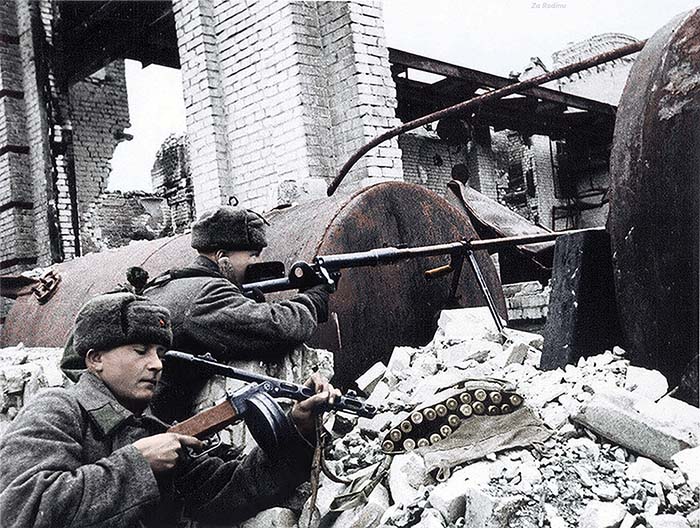
Stalin believed Hitler would not attack Russia. Even when the biggest invasion in history tore into his lines on June 22, 1941, Stalin believed the attack was unauthorized, and Hitler would quickly rein in his renegade Generals.
At that moment, Hitler was the only power on earth that could rein in the German invasion. He had no intention of doing so. The German Blitzkrieg roared from success to success.
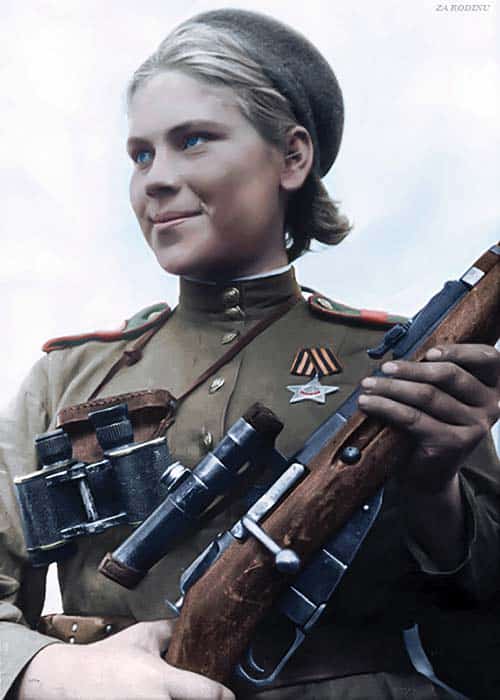
The German attackers swept the stunned opposition aside and plunged deep into the enemy rear areas. From there they dashed to the sides, cutting off the Russian front lines from hope of resupply and reinforcement. Then they wrapped them up into confused pockets of isolated and demoralized men, convinced, quite rightly, they had been abandoned and written off. In the first week of Barbarossa Germany captured 400,000 Soviet soldiers and the city of Minsk. Then the cities of Leningrad and Kiev came under the gun and in between another 600,000 Soviet soldiers were trapped and captured.
The majority of Soviet soldiers met Hitler’s forces with the Mosin-Nagant Model 91 “three-lined rifle.” The three lines measured the bore; each “line” being .254 of a centimeter, adding up to 7.62mm. The bore diameter would be used in most Soviet small arms, apparently in an effort to make barrel production more efficient. This bolt-action rifle, was another Tula development, an amalgam of Russian Captain Sergei Ivanovich Mosin’s rifle and Belgian Emile Nagant’s magazine. It was first issued in 1892. Almost 40 million were eventually made at Tula and other Russian arsenals. Some were even sub-contracted to Westinghouse and Remington in the U.S. The M91 served in the Russo-Japanese War, the Revolution, the Civil War and throughout WWII. A few even served in American and British hands. Most were long infantry versions, but shorter models were made and several sniper versions were produced.
Supporting the M91s were the Degtyaryov DP light machine guns. These were widely issued by the end of the 1930s. The distinctive 47-round pan magazine provided reliable feed at the cost of being awkward and hard to reload. But, the DP was reliable and easily manufactured even in improvised factories. Unlike its German counter-part, the MG-34, the DP did not have a quick-change barrel and relied on a low 600rpm fire rate to moderate over-heating.
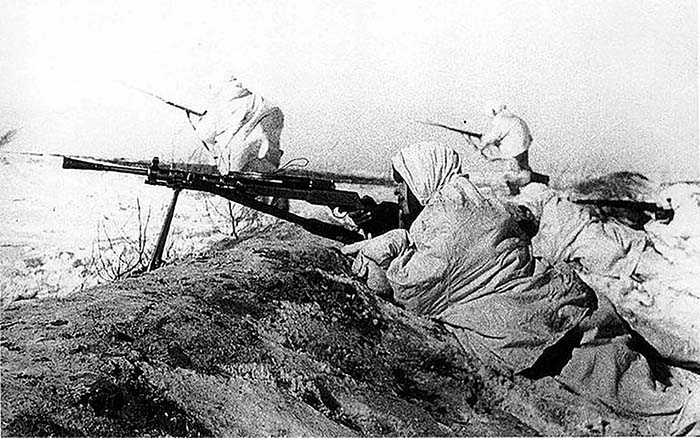
In a series of pincer movements, the Germans elevated their encirclements to a near art form. Even the German commanders were astounded at the huge numbers of captured enemy soldiers and equipment. There was no mechanism to cope with the volume, but the cynical policy of starving the prisoners eased the pressure.
Still, within a month, German commanders were starting to feel nervous. Their successes meant their resources were being devoured, but the Soviets seemed to have been underestimated and kept conjuring men and equipment out of nowhere. Resistance was stiffening as the Soviets learned of the savage German behavior, the flamethrowers unleashed on civilians, the massacres and the roving death squads. And, underlying everything, was a simple, noble, Russian love for their motherland.
Among the captured weapons were many Tula-made Maxim Model 1910s. Tsarist Russia first fielded the recoil-operated Maxim gun in the Russo-Japanese War and began to make their own in 1905. The Russian Model Maxim 1910 is easily recognized by its ribbed water-cooling jacket. During WWII, a distinctive tractor radiator cap was added to allow insertion of snow when liquid water was not available. The Model 1910 earned the term “heavy machine gun” with its shield and wheeled mount.
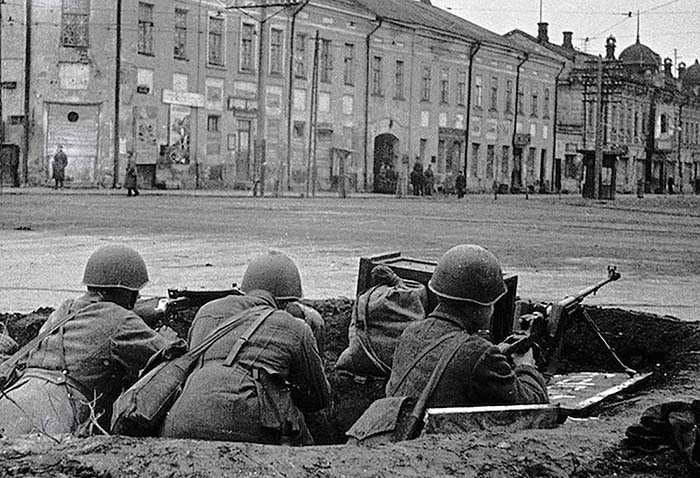
The Model 1910 fires the 7.62mm Russian rimmed cartridge from a 250-round belt at 600rpm. Although the gun was later superseded by the SG-43 Goryunov, it remained in production until after the war.
Field Marshall Gunther von Kluge led the Army Group Center in Operation Typhoon, the German operation to take Moscow. Hitler’s predicted three-month deadline for victory passed quietly, and the advance continued. Not until October 1941 did German scouts finally see Moscow through their binoculars. Twelve miles ahead, they saw a city bristling for battle and eerily empty. Stalin had sent government and industry 500-miles to the south-east and across the Volga River to the city of Kuibyshev. While Muscovites panicked and fled, Stalin looked at his private train ready to take him to safety and decided to stay in the besieged capital; a decision that likely saved the nation.
Winter came early in 1941, the cold stabbing the German soldiers through their summer uniforms. It would be the worst winter of the century. The Germans split up and raced to the flanks, hoping to surround Moscow and hit from several directions. Sweeping ahead to the south on October 7, the renowned German Colonel-General Heinz Guderian was approaching Moscow on the road from Orel with his proud 2nd Panzer Division. Ahead, the city of Tula was already writhing under German artillery shells. Von Kluge and Guderian expected this dot on the map would quickly be a minor memory. Guderian was ordered to take Tula.
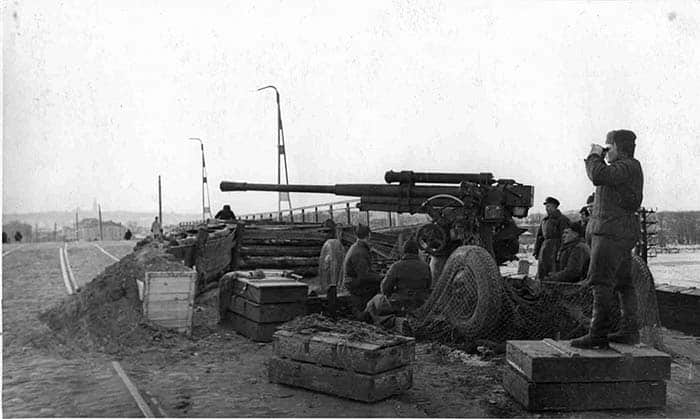
But, the ancient Russian ally, winter, would not be ignored. A layer of snow fell and then melted, turning the road to mud. Tanks and infantry transport sank, and the morass devoured German fuel and straining machinery and exhausted the men. Additionally, numerous partisan groups badgered the German supply lines and rear areas.
Ahead, the glow of Tula’s industry could occasionally be glimpsed. As well as being the manufacturing center of many Soviet arms, Tula was also the birthplace of the Soviet TT-33 semi-automatic pistol. The two “Ts” in “TT” stand for the gun’s designer, Tokarev and the Tula arsenal. Tokarev, a Tula native, improved on John Browning’s design with an improved system of holding the recoil spring. Overall the gun is made to be easier and simpler than a Browning to clean and fix. The 7.62mm ammo is held in an 8-round magazine, and the gun could fire the German 7.62mm if any were captured.
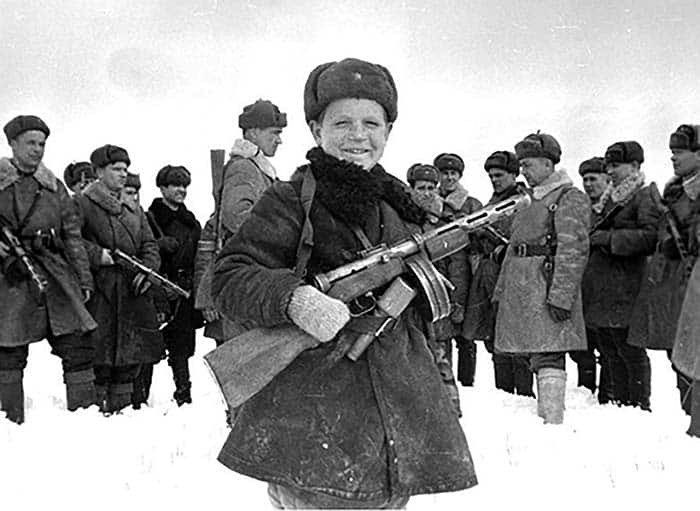
Another Tula product was the Nagant M1895 revolver designed by and named for Emile’s brother Leon Nagant. This remarkable gun was produced at Tula from 1895 through both World Wars. It fired seven shots of a unique 7.62mm rimmed cartridge. The full-length brass cartridge surrounded the bullet. The gun pushed the cylinder forward to seal the gap between cylinder and barrel. This eliminated flash, preserved the power of the burning gases and facilitated use of a silencer if desired. The various secret police services made use of this.
Stalin appointed General Georgy Zhukov to take over the Western Front, including Moscow’s defense, on October 10. Twelve days later, German elements neared Tula, and V.G. Zhavoronkov, the First Secretary of the city, assumed combat command of Tula and formed the 1500-strong Tula Workers Regiment.
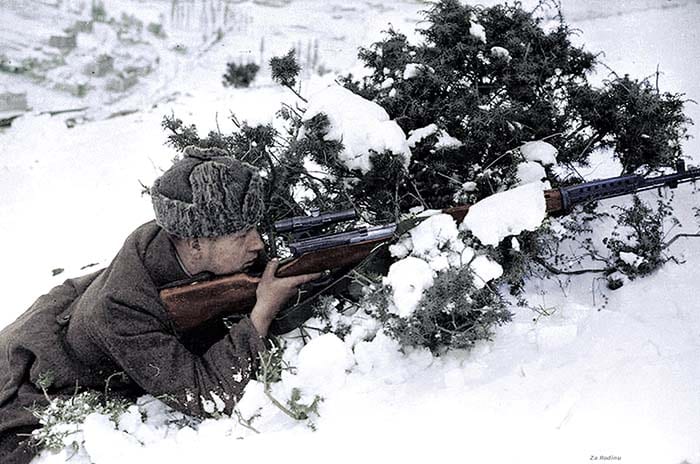
While the new regiment trained, everyone else fit to work was drafted to build defenses. Trenches, barbed wire, minefields and anti-ditches began to ring the city. Homes and factories were strengthened and stocked with weapons, ammunition and Molotov “cocktails;” bottles of gasoline to be thrown at tanks. Anti-tank weapons were in short supply, but Degtyaryov had also designed two models of light anti-tank rifles. The bolt-action PTRD and the semi-auto PTRS-41 both used the same 14.5mm cartridge. Unfortunately, they only penetrated the German tanks under ideal conditions. The semi-auto PTRS-41 only functioned well when it and its ammunition were well-bathed in oil.
A layered perimeter was established. When the temperatures dipped, wood from the rubble was burned to soften the frozen ground. Belts of wire were thickened and ditches deepened.
Entire factories had been disassembled, crated and shipped east. Several production lines from the Tula arms factory went with them, but production did not stop. The remaining lines worked night and day.
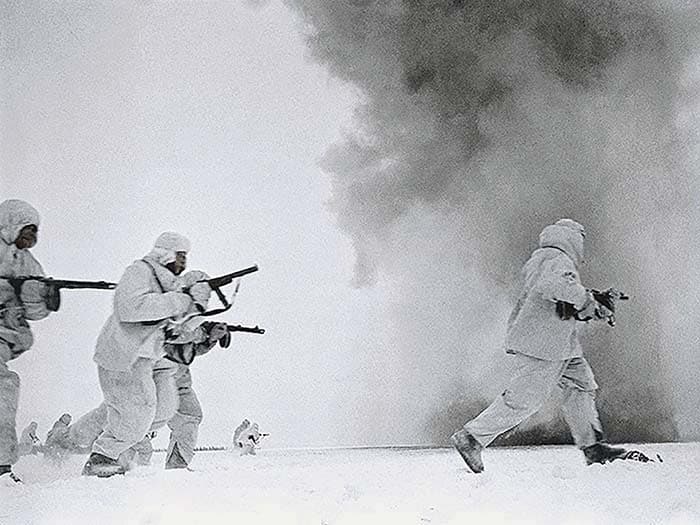
The Soviet Army bolstered the Tula Workers Regiment. Throughout the fighting, women, children and the elderly would carry supplies to the front, carry messages and help the wounded. While the defenders prepared and scrambled to plug their gaps, they couldn’t know Stalin was already assembling reserves to the east.
On October 24, Guderian’s drive on Tula began. By October 28, he was less than 20 miles from Tula. The lone, muddy road remained a huge problem, and only one battalion of infantry had enough fuel to keep up with the dwindling tanks. The pace had to slow; without the infantry, the Panzers were prey for the often suicidal Soviet anti-tank squads.
On October 29, the German tanks ground over the small towns south of Tula, smashing through the thin resistance. Dusk found the Germans tired, grimy and mud-covered but only two miles from Tula.
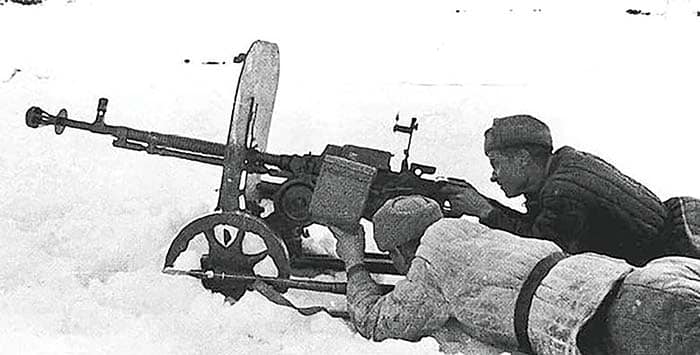
“Take it!” Guderian was ordered. He attacked immediately in the hope of surprising the Soviets and breaking into Tula. It didn’t happen. The Soviet defenders lashed out with their M91s, SVTs, PPShs, DPs, anti-tank guns, Maxims and Dashkas. Mortars and artillery piled on to bring the shaken Germans to a standstill. Guderian’s attack was suspended until dawn. The attack had failed, but the idea was right; Tula was strengthened and reinforced under cover of darkness.
The sun rose unseen behind low, dark, clouds. The German artillery barrage lit them up at 5.30 a.m., the shells mingling with rain. When the bombardment stopped, the tanks, confined to the few roads by even more mud, made contact with Tula. The German infantry pressed forward with them. By mid-afternoon, the fighting fell to a stalemate. Then, the Soviet T-34 tanks arrived, their broad tracks able to negotiate the soft ground. Their 76mm guns pounded the 2nd Panzers and drove them back. The infantry could only follow.
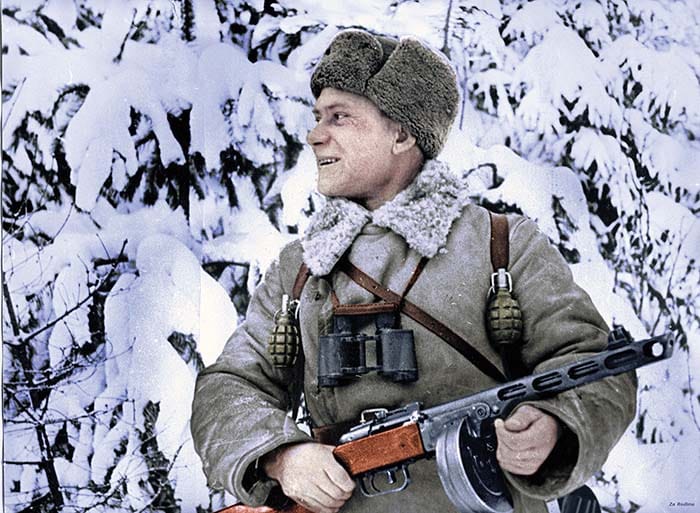
A last-gasp German attack late in the afternoon fared no better. Soviet forces in a defended cemetery blunted it, and when the Germans shifted into a factory area they did no better. By nightfall, the unhappy Germans were digging their own defensive positions.
During the overcast night, still more reinforcements joined the now hopeful defenders, bringing their strength to more than two dozen tanks. A fresh rifle division deployed, and more anti-aircraft guns were wheeled into front-line service. The Germans held back Soviet infiltrators all night.
The night brought a new horror. The Katyusha multiple rocket launchers were a terrifying surprise. These were nick-named “Stalin’s organs” because the grouped launching tubes resembled the pipes in a church organ. As the rockets howled and exploded, the thin morning light revealed ghostly Soviet fighters through the mist, smoke and drizzle.

The Luftwaffe sent planes, but the Soviet 732nd Anti-aircraft Artillery Regiment shot down several and disrupted the attack. Their 85mm guns were then leveled to engage German ground forces. When the rare Soviet aircraft did appear they strafed the Germans with 7.62mm and 12.7mm aircraft machine guns made at Tula.
The Germans could barely hold, and attack was out of the question. On November 1, the Soviets counter-attacked from Tula again. The counter-attack stalled as the Germans, now trapped in the mud, fought with their backs to the wall, attacking tanks on foot with small arms and grenades.
Again, the front gelled. Seeing his attacks stopped, but realizing the Soviet counter-attack was also stopped, Guderian shifted north to bypass the city, continue the advance to Moscow and cut off Tula from further resupply and reinforcement.
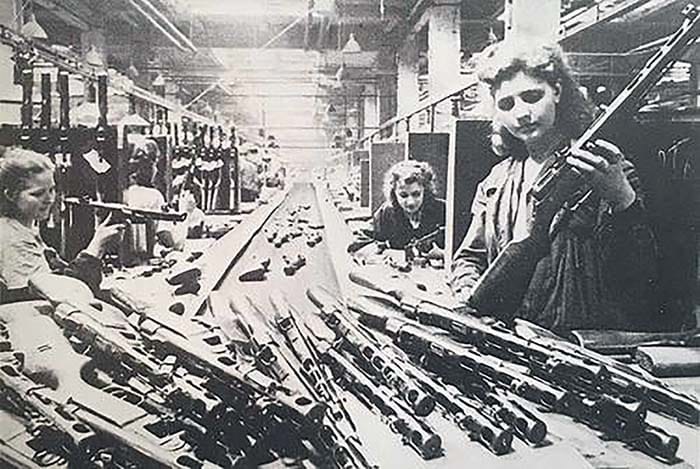
The Panzers met rigid resistance. At the same time, another push toward Tula was stopped by the unshakable 156th Rifle Regiment of the NKVD. By November 3, the battle lines were again locked in trenches and foxholes.
Over the next two days, the 413th Rifle Division reinforced Tula. More importantly, a cold front pushed away the drizzled weather. The frigid air froze the mud, and the German vehicles and men could move. It also brought new suffering to the Germans. Emergency supplies of winter clothing were miles behind in the vast muddy traffic jam stretching back to Poland. The cold hit record lows.
On November 15, the Germans struggled again to push around Tula and regain the initiative. Despite several counter-attacks mounted by the Soviets, by November 17, it looked like the attack might succeed. Then the T-34 tanks arrived to catch the German infantry unsupported. Their 37mm anti-tank guns were useless against the T-34s. The German commanders watched dumbfounded as their men ran for their lives. Reinforcements stabilized the situation, but the sense of foreboding was inescapable.
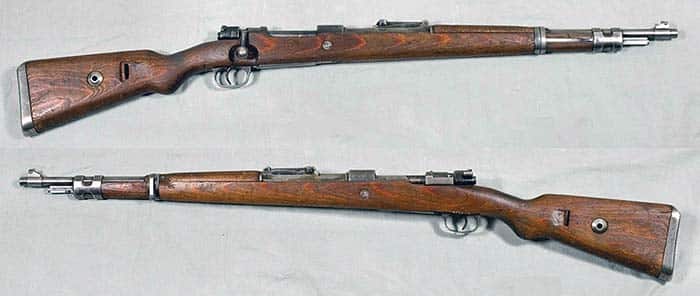
On November 18, Guderian’s attack lurched north toward Moscow. German tanks detached to attack Tula from the north. Tula was nearly cut off as German forces seized the road from Moscow.
Too little, too late—The German forces were simply exhausted of everything. By December 5, Guderian was looking for an exit.
The next day, the prepared Soviet counter-attacks by fresh Siberian troops with hundreds of new PPShs and dozens of new T-34 tanks bled out the last of German energy and material. The temperature dropped to -36F. Oil froze in German engines and guns, grease froze on artillery ammunition, optical sights frosted and fogged, and metal parts, reportedly including rifle bolt handles, became brittle and broke. The Siberians had seen worse and shrugged it off.
Soon, there were plans to withdraw and consolidate and counter-attack. These came too little in the cold and confusion. Moscow did not fall. On December 20, Guderian flew to Hitler’s headquarters to plan a withdrawal. On Christmas day Hitler fired him.
There were many battles ahead, but Moscow was safe, and the German adventure in Russia was turned. The defenders of Tula were largely responsible; Hitler was stopped at the Iron City’s door.
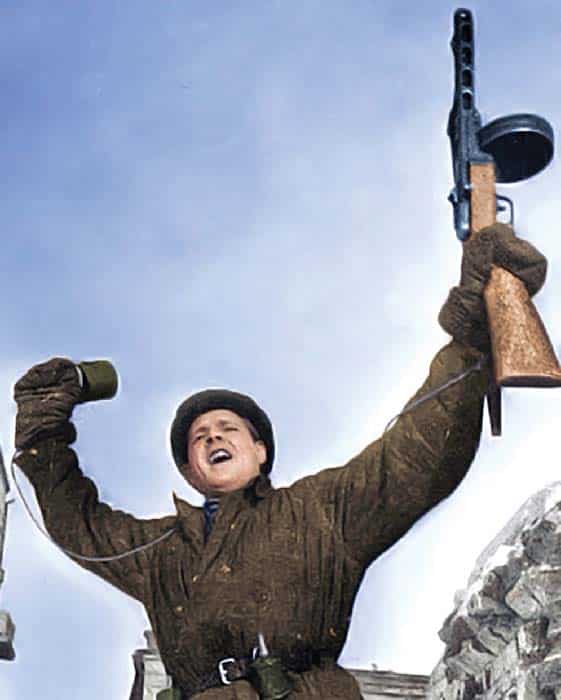
This article first appeared in Small Arms Review V22N9 (November 2018)



